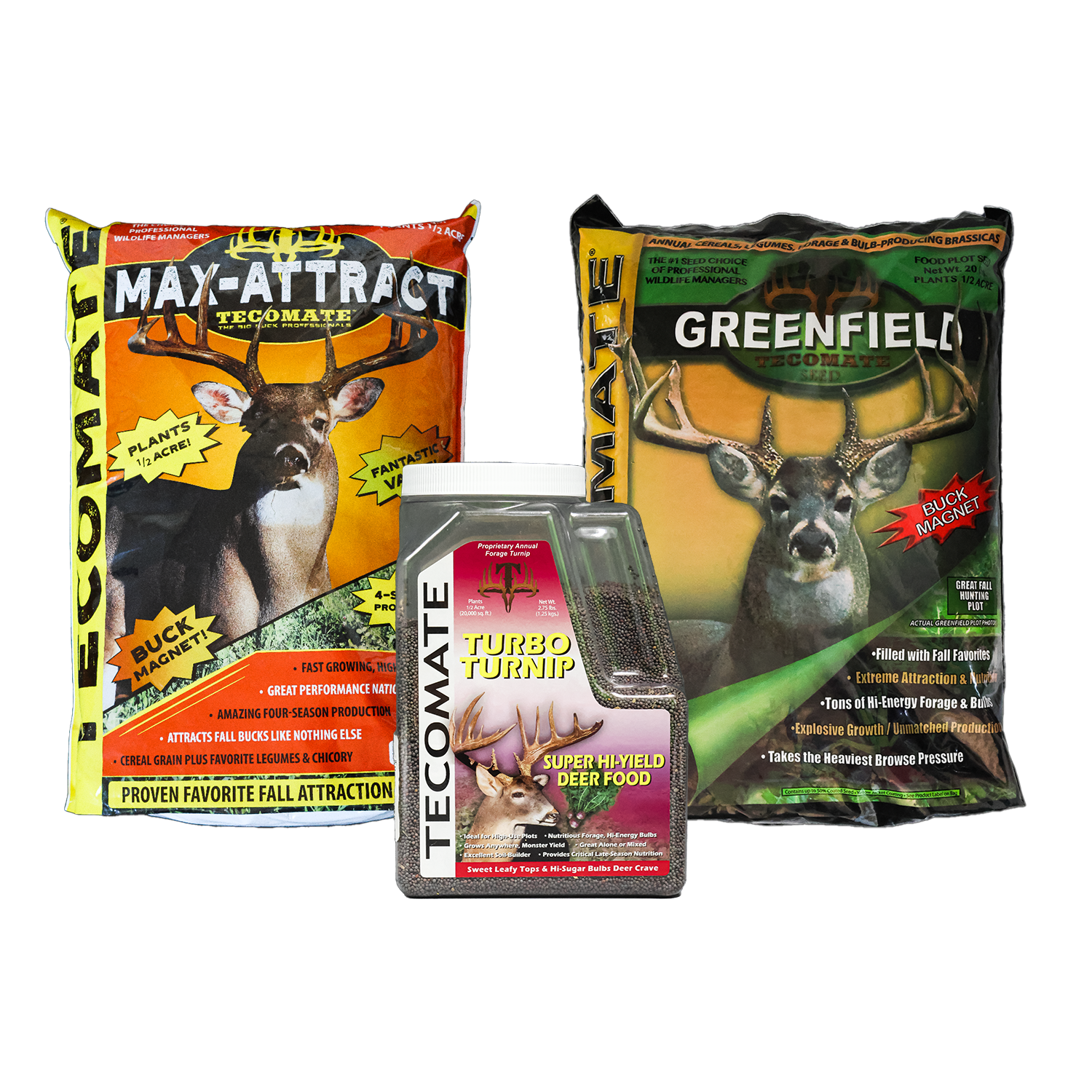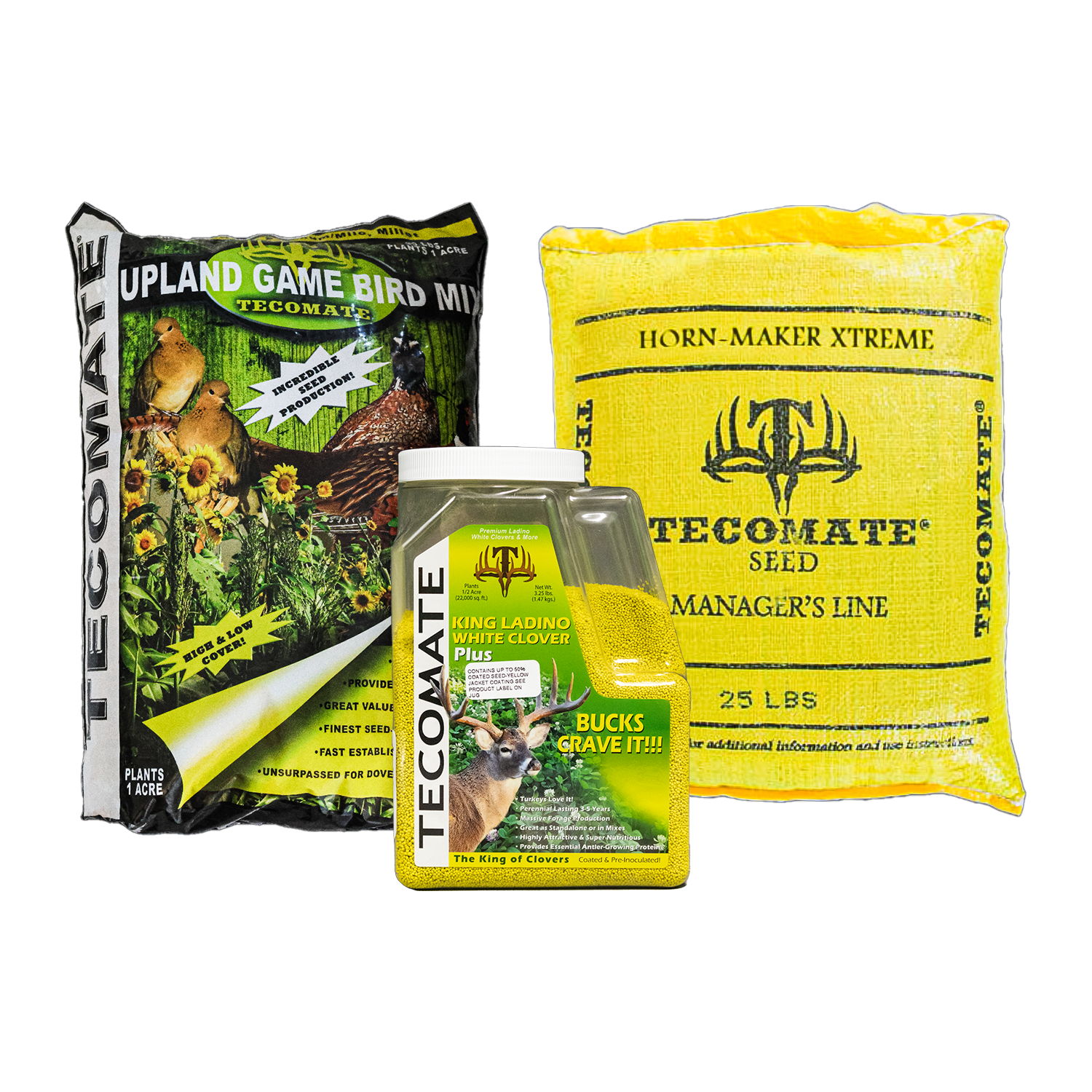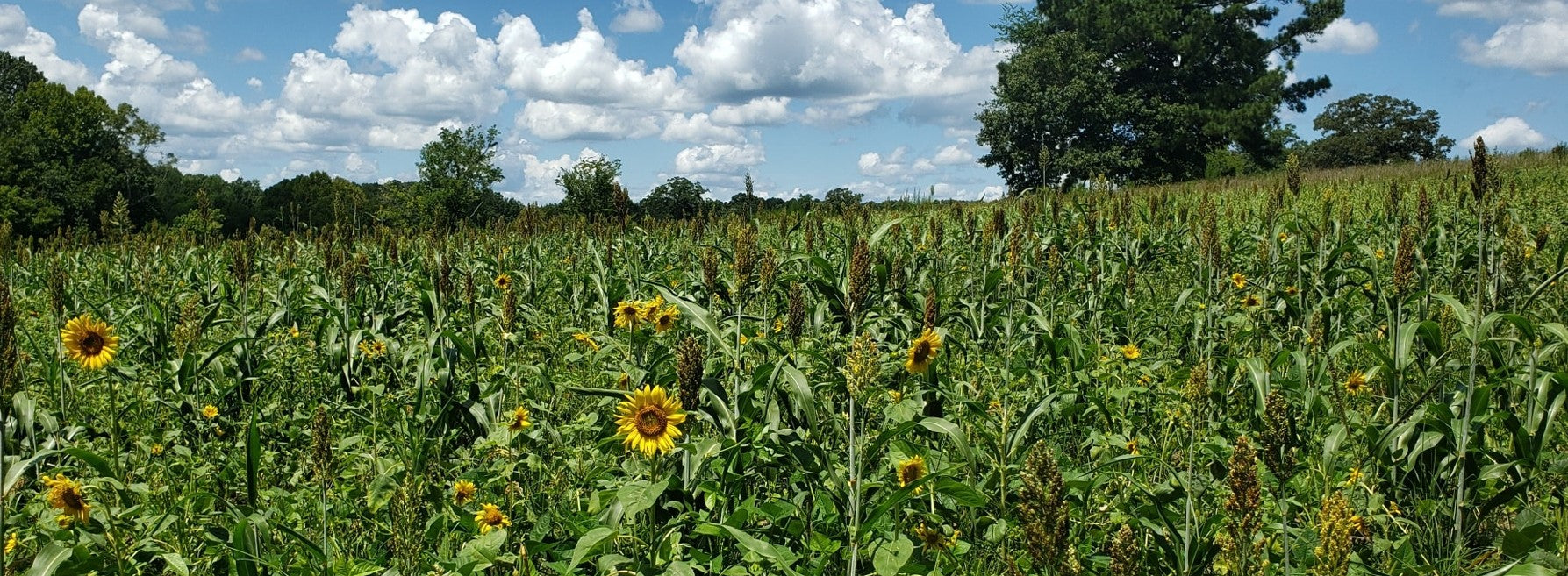Big Buck Strategy – El Cazador Ranch
 Growing big bucks is really pretty simple in concept – give’em plenty of nutritious food and let them live long enough to reach their maximum antler size. On my 3,000-acre El Cazador Ranch in South Texas, we have done just this and the results have been nothing short of amazing. In 10 years of management, we’ve harvested 23 bucks grossing over 170, six of which netted high enough to make the Boone & Crockett Record Book. Genetics determine size potential, but age and nutrition determine how much of that size potential is realized.
Growing big bucks is really pretty simple in concept – give’em plenty of nutritious food and let them live long enough to reach their maximum antler size. On my 3,000-acre El Cazador Ranch in South Texas, we have done just this and the results have been nothing short of amazing. In 10 years of management, we’ve harvested 23 bucks grossing over 170, six of which netted high enough to make the Boone & Crockett Record Book. Genetics determine size potential, but age and nutrition determine how much of that size potential is realized.
If you want big bucks, they have to have age. All things equal, it’s a simple fact that bucks get bigger with age until they reach a peak size, usually 5½ to 6½ years old, and then they begin to decline. On my ranch, years of experience have told us that our bucks typically reach their greatest size at 6½ years old: therefore, we try to carry our best “genetic” bucks to that age before we start to TRY to harvest them. This way, we know our best bucks have the chance to obtain their greatest size based on their genetic potential and the nutrition available to them. As for the bucks that have less genetic potential, the poorer quality they are, we earlier we start to harvest them. In extreme cases, we’ll even shoot the sorriest of a year-class before they reach maturity, but generally, we start targeting the lower quality bucks when they reach 4½ years old, our minimum age for “mature” bucks. But to be honest about it, our “cull and management buck” strategy is not so much aimed at improving the genetics of the herd as it is in simply managing numbers and not investing more time and nutrition than necessary in bucks of lesser size potential. In truth is: The genetic potential of a deer herd, even one with plenty of old bucks, is always much, much better than people realize because the deer almost never have the quality food necessary to fully express their genetic potential. For this reason, the focus of management on my El Cazador Ranch is highly nutritious FOOD!
Our nutritional strategy centers on year-round food plots, but most especially high-protein warm season plots, when the bucks are growing antlers and the does are supporting fawns. The magic is in the summer plots; not the winter plots! It’s the abundance of high-protein food during the growing season from April through August that allows a manager to grow more and bigger deer than ever thought possible … and hold them closer to home in the process! This management concept is now commonly known as the Tecomate Food Plot Strategy, named after the folks at Tecomate who pioneered intensive food plot management, most notably Dr. Gary Schwarz. The results of providing a deer herd with an abundance of high-protein forage during the critical warm-season months prove that a manager’s best investment is almost always in improving the nutritional plane of his deer herd. If you let deer get old and give them plenty of quality food, most hunters and managers will be amazed at the latent genetic potential that has lay dominant right before their eyes all these years.
Such was the case on my ranch. When I first bought it, our first helicopter survey showed that there were plenty of older bucks on the ranch but the biggest buck we saw was in the 140s. Long-term overgrazing of cattle had stressed the habitat and deer, resulting in a poor nutritional plane. We set about improving that with food plots and a supplemental feed safety net. Within 2 years, the average size of mature bucks exploded by 40 pounds and 20 B&C points, without increasing the age structure or any genetic changes … just nutrition! Today, a 140 would be one of our SMALLER mature bucks. Bucks scoring in the 150s and 160s are common, and every year we have several scoring from 170 to 200! Last year alone, we harvested 5 over 170, 3 of which topped 190 and 2 broke the 200 mark. How was that possible? Quality nutrition, plain and simple.
Photo By Hardy Jackson
Posted by David Morris











Leave a comment